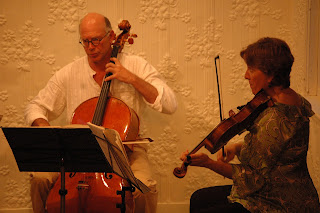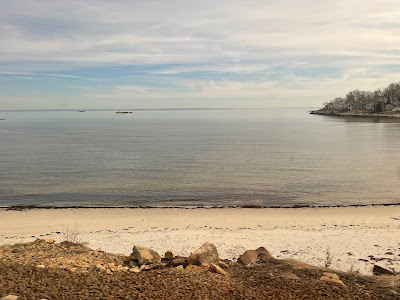 |
| The towering Eastport Arts Center, formerly a Baptist Church in Maine's easternmost community. |
As theater makers, we deal in physicalities.
Our work often involves buildings -- saving old ones and at times building new to house our stages, roofs under which to bring people together.
So it was with our dear compatriot Jean Wilhelm throughout her career, but especially in the last two decades as she helped to purchase an old Baptist church in Eastport, Maine -- our nation's most eastern outpost -- and create the Eastport Arts Center.
As its website says, "The Eastport Arts Center (EAC) nurtures and promotes six year-round constituent groups engaged in theater, art, music, film education and community outreach."
Music to Jean's ears, and a song to my soul.
Jean, who was in her late '70's already when she relocated to Eastport, didn't do this on her own. She worked closely with another woman, Joyce Weber, who died two years before Jean, as well as many, many community members. Because in theater we don't do anything on our own. Theater is the art of the ensemble, of community. It is about bringing people together to share an experience, "to breathe," as one friend of mine said, "the same air." |
| Jean Wilhelm memorabilia at her memorial service August 13, 2022 in Eastport, Maine. |
Jean had fairly auspicious roots but, born in
1927 and graduating from high school in 1943, she became a woman during a time when being independent was not the norm. She had to, and did, literally sail her own course: straight through Smith College where she worked with the iconic Hallie Flanagan and on through advanced degrees in theater at West Virginia University and the University of Minnesota, on to the University of New South Wales in Australia and Goucher College in Maryland and finally on up the Maine coast. It was while getting her PhD in Minnesota that she forcefully introduced herself for hire to the legendary director Sir Tyrone Guthrie; opening up, as she said, "a whole wonderful sequence of events" including directing Guthrie's infamous worldwide touring version of Oedipus Rex in Australia in 1970-71.
The thing that most resonated with us about Jean was not even her artistic work -- we traveled up to see both Brian Friel's "Dancing at Luhnasa" and Williams' "The Glass Menagerie" under her hand in Eastport -- but her dedication to democracy: in civic life as well as in theater. The two came together for Jean as they do for us.
 |
| Jean's official President Obama commemorative photo. |
For example, at her memorial service on August 13, 2022, I newly learned she had been in front of the Eastport post office every Saturday -- protesting George W. Bush's falsified war in Iraq. She shamelessly supported Democratic candidates, including Obama. Her small-D democratic values powered her work -- as it did our own.
 |
| Jean's nephew Bill deBlasio, former Mayor of NYC. |
#MaineCulture
#CultureChange
#NewBlogPost
#Onward



























